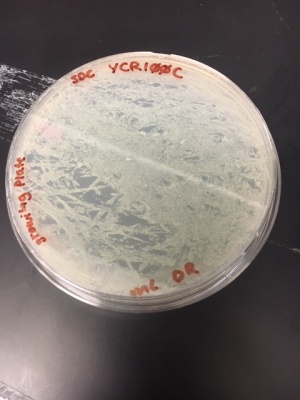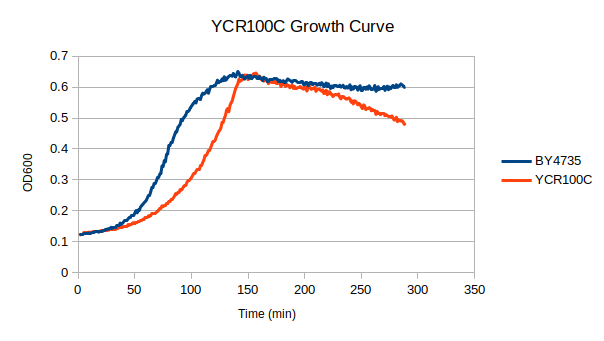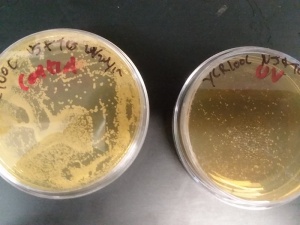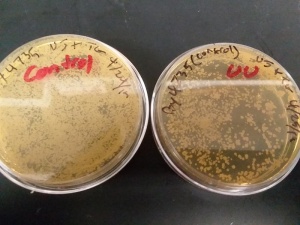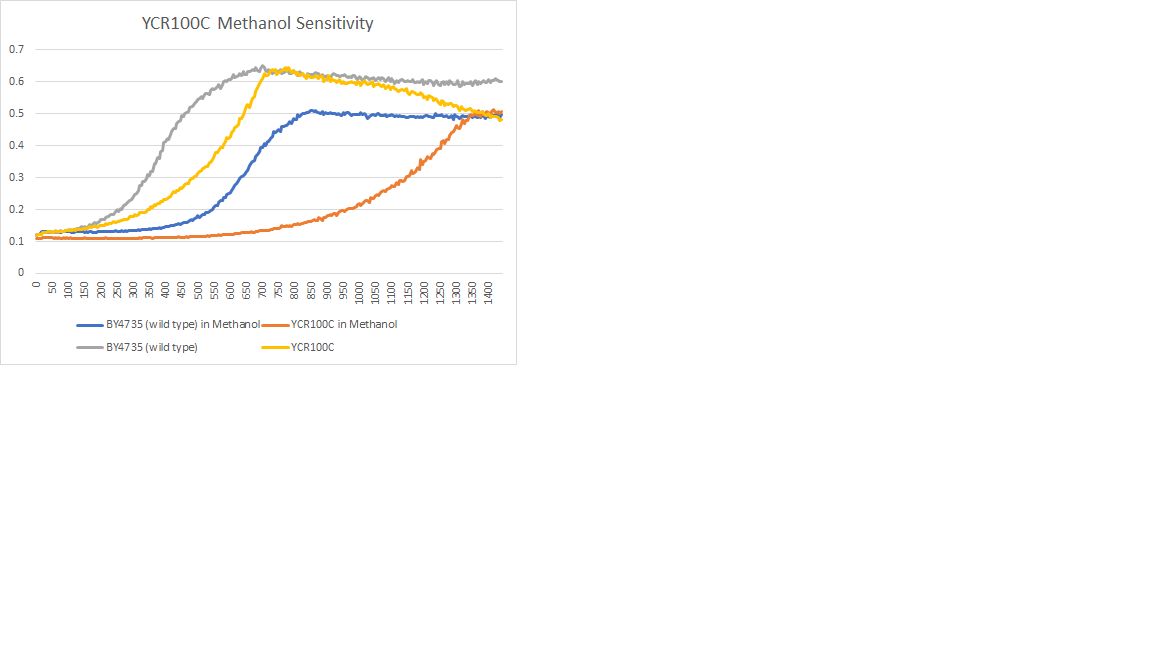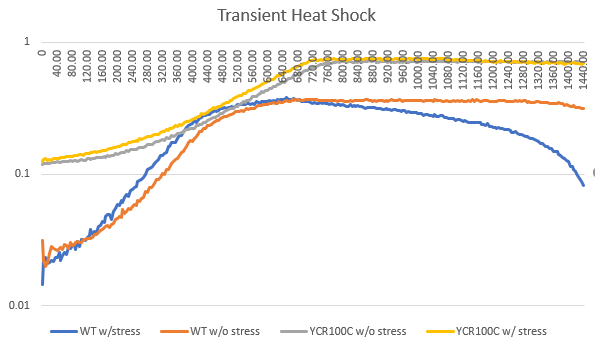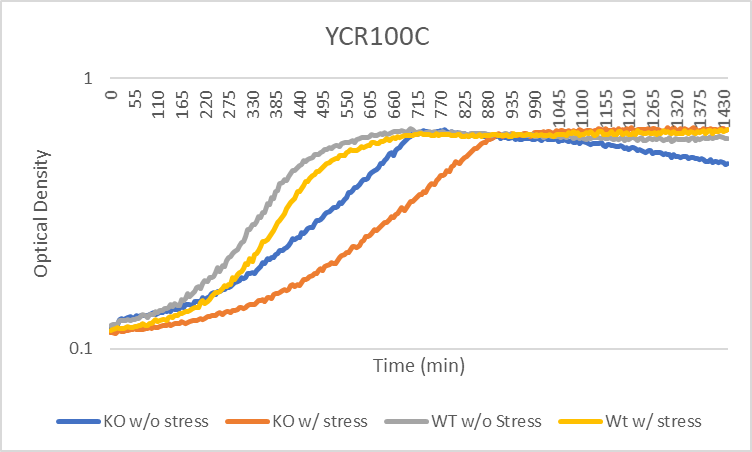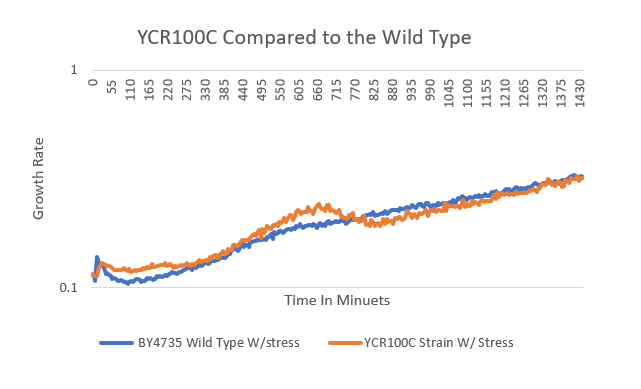YCR100C
Share your knowledge...Edit this entry!
| Systematic name | YCR100C |
| Gene name | |
| Aliases | |
| Feature type | ORF, Uncharacterized |
| Coordinates | Chr III:302221..301271 |
| Primary SGDID | S000000697 |
Description of YCR100C: Putative protein of unknown function[1]
Contents
Community Commentary
About Community Commentary. Please share your knowledge!
This gene is part of the UW-Stout Orphan Gene Project. Learn more here.
UW-Stout/Sensitivity To Nitrogen Starvation
Knocking out the YCR100C seems to have no effect on growth after incubating for 5 days on the Nitrogen omitted media.
Growth Curve
In a BY4735 background, knocking out YCR100C seems to have a moderate effect on growth rate in log-phase. In this assay, the BY4735 strain's doubling time was 124 minutes, while the YCR100C knock-out strain's doubling time was 219 minutes.
Ultraviolet Sensitivity
YCR100C is more sensitive than BY4735(wild) given that there is less colonizes present when under the same stress.
G-418 Stress
In the BY4735 background, knocking out the YCR100C strain seem to have a very small effect on a growth rate by slowing it down. In the knock-out experiment, the BY4735 strain's doubling time was 149 minutes, whereas the YCR100C knock-out strain's doubling time was 235 minutes. In the calibration experiment, the BY4735 strain's doubling time was 64 minutes, whereas the YCR100C knock-out strain's doubling time was 92 minutes.
Methanol Sensitivity
The wild type had a doubling time of 150 min, the YCR100c had a doubling time of 350 min. The methanol slowed the yeast down and that means this strain is more sensitive.
Heat Shock
Heat shock had no change on the doubling time, but the starting amount of yeast cells less. The heat seemed to kill off the cells, the longer they were in the hot water bath.
Stressing with Hydroxyurea
Hydroxyurea Protocol -The wild type strain had only a small difference in doubling time when stressed with Hydroxyurea;YCR100C showed about a 20 minute difference in doubling time when stressed with hydroxyurea, indicating that this gene most likely does not play a vital role in DNA replication.
Fermentation
Fermentation protocol link [2] - There appears to be no major difference in fermentation rate. The lower final ethanol percentage could be a result of evaporation. If this experiment were to be carried out again then it should be done in an air tight container.
Caffeine Sensitivity
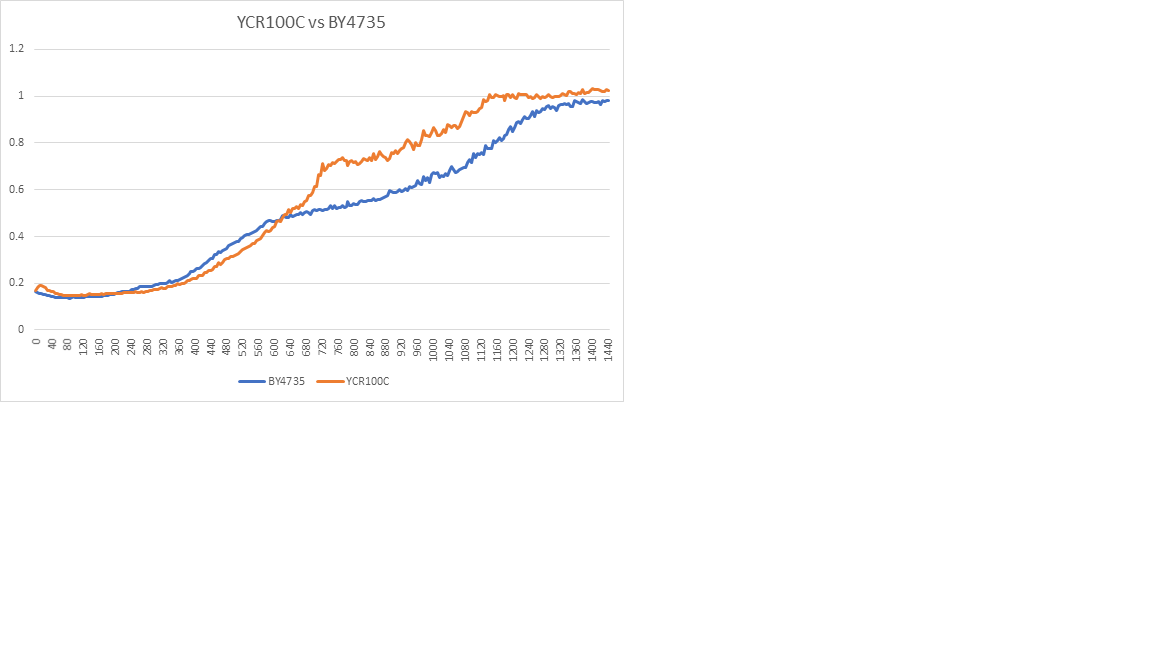 CAffeine PRotocol UW-Stout/Caffeine YCR100C and the Wild Type yeast had a very similar reaction to the caffeine.
CAffeine PRotocol UW-Stout/Caffeine YCR100C and the Wild Type yeast had a very similar reaction to the caffeine.
Stressing with pH
pH stress protocol link [3]
- The wild type strain had a significant difference in doubling time when my partner and I stressed it out with a varying levels of acidic pH's and It displayed that when we tested it on the final lab experiment of a pH of 4 that it was highly sensitive to that particular pH and In some of the test conditions that it displayed that they have died or are very very slowly growing. But the yeast gene strain YCL002C we came to the conclusion that it was a lot more resilient to the acidic pH of 4 than the wild type strain.
[[File:----
Stressing with pH
pH stress protocol link [4]
When we looked at the line graph we saw that the data for each strain were pretty close to each other but there was still a growth difference when we compared the yeast gene strain YCR100C to the wild type strain BY4735 but not that much to say that either one of them is more resilient than the other. So, Therefore our conclusion is that each strain is both resilient to the acidic pH of 4.
References
See Help:References on how to add references
See Help:Categories on how to add the wiki page for this gene to a Category
